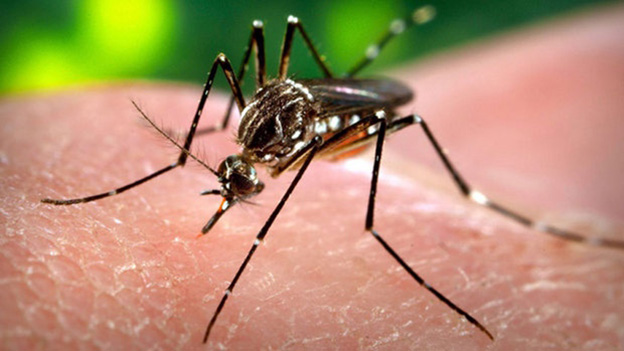What you need to know about the Zika virus

Aedes aegypti, one of the transmitters Zika virus.
The World Health Organization declared an international emergency on Feb. 1 over the explosive spread of the mosquito-borne Zika virus, calling it an “extraordinary event.” The virus is linked to birth defects in the Americas where it has spread across parts of Latin America and the Caribbean.
Dr. Mark Loeb, a professor of McMaster University’s Department of Pathology and Molecular Medicine, a member of the Michael G. DeGroote Institute for Infectious Disease Research and an infectious disease specialist for Hamilton Health Sciences, answers some of the more common questions surrounding the virus.
What is the Zika virus?
The Zika virus is a flavivirus, which is a genus of viruses that includes West Nile and dengue. The virus is spread by Aedes mosquitoes, which are found in tropical and subtropical zones, including Central and South America and the Caribbean. Zika is typically a self-limiting illness with symptoms that include fever, joint pain, rash and conjunctivitis (pink eye). These symptoms usually last two to seven days.
More recently, there appears to be a steep increase in pregnancy-associated conditions like microcephaly in pregnant women exposed to the Zika virus. So the real concern public health agencies share is the potential risk to pregnant women, despite any causal link being fully established. Studies are ongoing, and health authorities from around the world are thoroughly investigating this potential link. However, as a precaution, it is recommended that pregnant women avoid destinations where there is transmission of the Zika virus, such as Latin America and the Caribbean.
Why is it a growing concern?
It is because of the rise in pregnancy-associated conditions like microcephaly. This is something that has to be taken seriously. If a causal relationship between the Zika virus and microcephaly is established, we need look at this very, very carefully.
What is microcephaly?
Microcephaly is a rare neurological condition where a baby is born with a smaller-than-average head. This condition is usually the result of abnormal brain development during pregnancy. There are a number of environmental and genetic causes of microcephaly, including chromosomal disorders (Down syndrome), viruses (rubella) and malnutrition.
How does it spread?
The Zika virus is spread by the Aedes mosquito, which is also the vector for other tropical diseases such as dengue and yellow fever.
Is there a known treatment?
There is no known vaccine or treatment for Zika.
What can we do to protect ourselves?
People must be vigilant in limiting their exposure to mosquitoes. If traveling to the aforementioned destinations, use insecticides, mosquito nets and wear long sleeves and pants.
Pregnant women who must travel to endemic areas should consult with their doctors.
